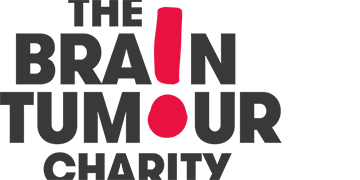
The Brain Tumour Charity

Executive Summary
Fiona has just received the devastating news that her son has a brain tumour. But on her first visit to The Brain Tumour Charity’s website, within a few clicks she’s found relevant articles on caring for him – and she knows to ask her son’s surgeon to store a tissue sample that may allow him to have immunotherapy treatment in the future.
“The surgeon is focused on one thing in the operating room: saving a life. It might not occur to them to save a tissue sample, but by arming people with the right information before the procedure we can help them have the best chance of fighting the disease,” said Sarah Lindsell, CEO at The Brain Tumour Charity.
Blazing a Trail With Richer Insights
With Salesforce, website visitors can find the most relevant information quickly and easily to help them make smarter decisions. “It doesn’t take a brain surgeon to work out that if you catch a tumour early, the impact may be less damaging,” said Lindsell. “Salesforce helps us identify who a web visitor is and what they’re interested in so we can better support them on their care journey.”
The charity is using Marketing Cloud Personalization to track browser behaviour on its website and direct people to relevant content.
As the first charity to use the tool, the technology is helping The Brain Tumour Charity move towards its main goal to double survival and halve the harm caused by brain tumours by 2025.
Tailor-Made Content to Deliver The Right Message
When someone registers with The Brain Tumour Charity, Salesforce captures their whole journey and segments them, based on whether they’re primarily a patient, a fundraiser or someone who wants to help raise awareness of the disease.
“There’s huge potential for us to optimise our relationships by driving engagement through a highly personalised experience,” explained Antonio Cappelletti, Director of Engagement.
“Capturing the bigger picture with Salesforce gives us valuable insight on what’s going on with a contact to make sure our communications are sensitive as well as relevant – we wouldn’t want to invite someone to a family fundraising event if their child was in critical care, for example.”
“Salesforce helps us identify who a web visitor is and what they’re interested in so we can better support them on their care journey.” Sarah Lindsell, CEOThe Brain Tumour Charity
Richer Insights From Data Dicing and Slicing.
Having a central repository for data also helps to measure campaign performance and track which tactics are bringing in the most funding. “Being able to slice and dice data wasn’t something we could do before, but we’ve now got access to richer insights to help us make smarter decisions and allocate resources more efficiently,” Cappelletti added.
For example, for The Twilight Walk, where its supporters unite to raise funds through walks around the UK, The Charity looks at where communities are, as well as where it’s making the biggest impact and raising the most funds to help decide where the events happen and how many staff it needs to support the walkers.
Keeping Lean and Scalable Drives Down Costs
One of The Brain Tumour Charity’s goals is to ensure that for every pound someone donates, 80p goes direct to charitable activities and less than 20p covers fundraising and administration. “Salesforce keeps us lean and scalable, so we can keep operating costs down and ensure more money goes into research,” said Lindsell.
Poor survival rates and lack of government investment means the world’s leading brain tumour charity is kept busy both fundraising and campaigning. And as the largest dedicated funder of research into brain tumours globally, money raised provides information, services and support groups.
Explore the Solutions:
Complete Data Capture Shakes Up Operations
“Everything is captured in one place on Salesforce. It’s the charity’s heartbeat and has fundamentally changed how we operate, impacting every department and affecting the end-to-end experience,” said Cappelletti.
And as the charity moves forward, the next five years will be data-driven, with decisions based on information gleaned through Salesforce and from listening to its community of supporters and users.
“We’ve grown from having a £1m income and six staff to 120-plus staff and a projected income of £11m in 2019 – there’s no way we could’ve done that without using Salesforce,” said Lindsell.